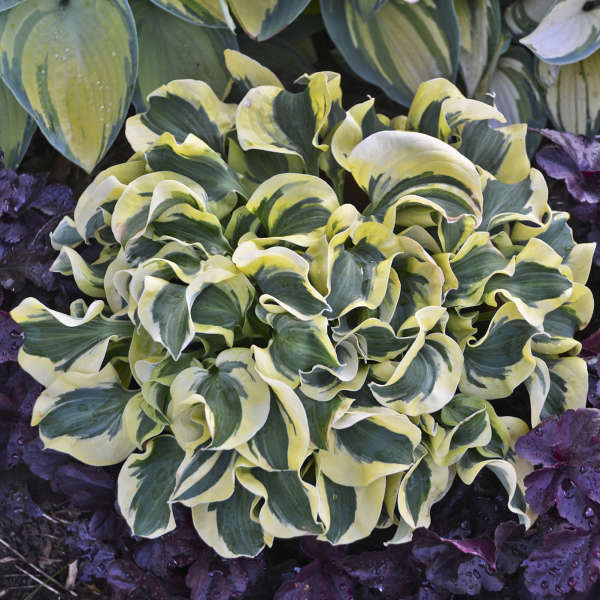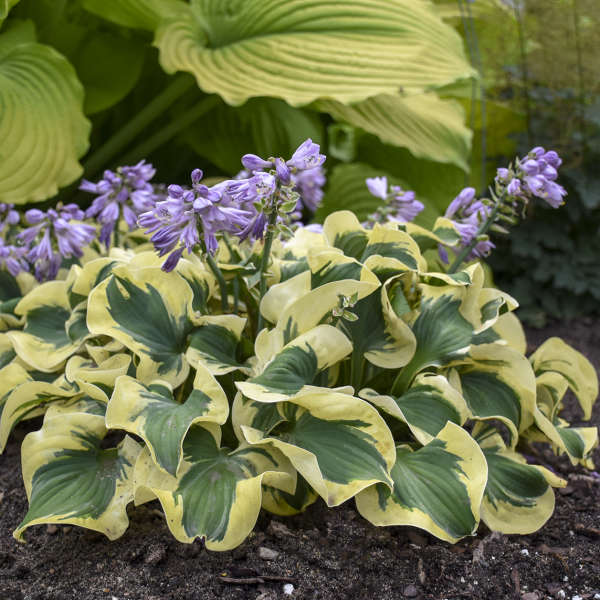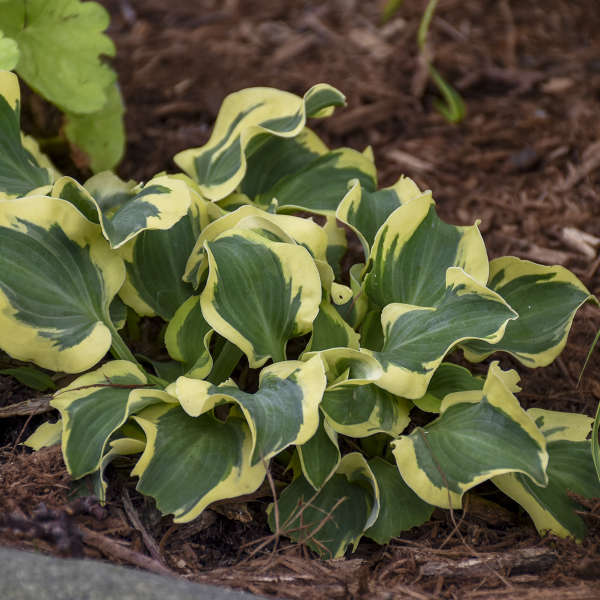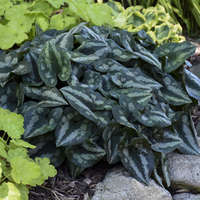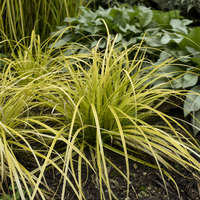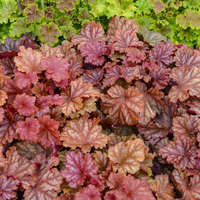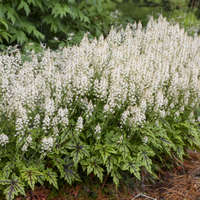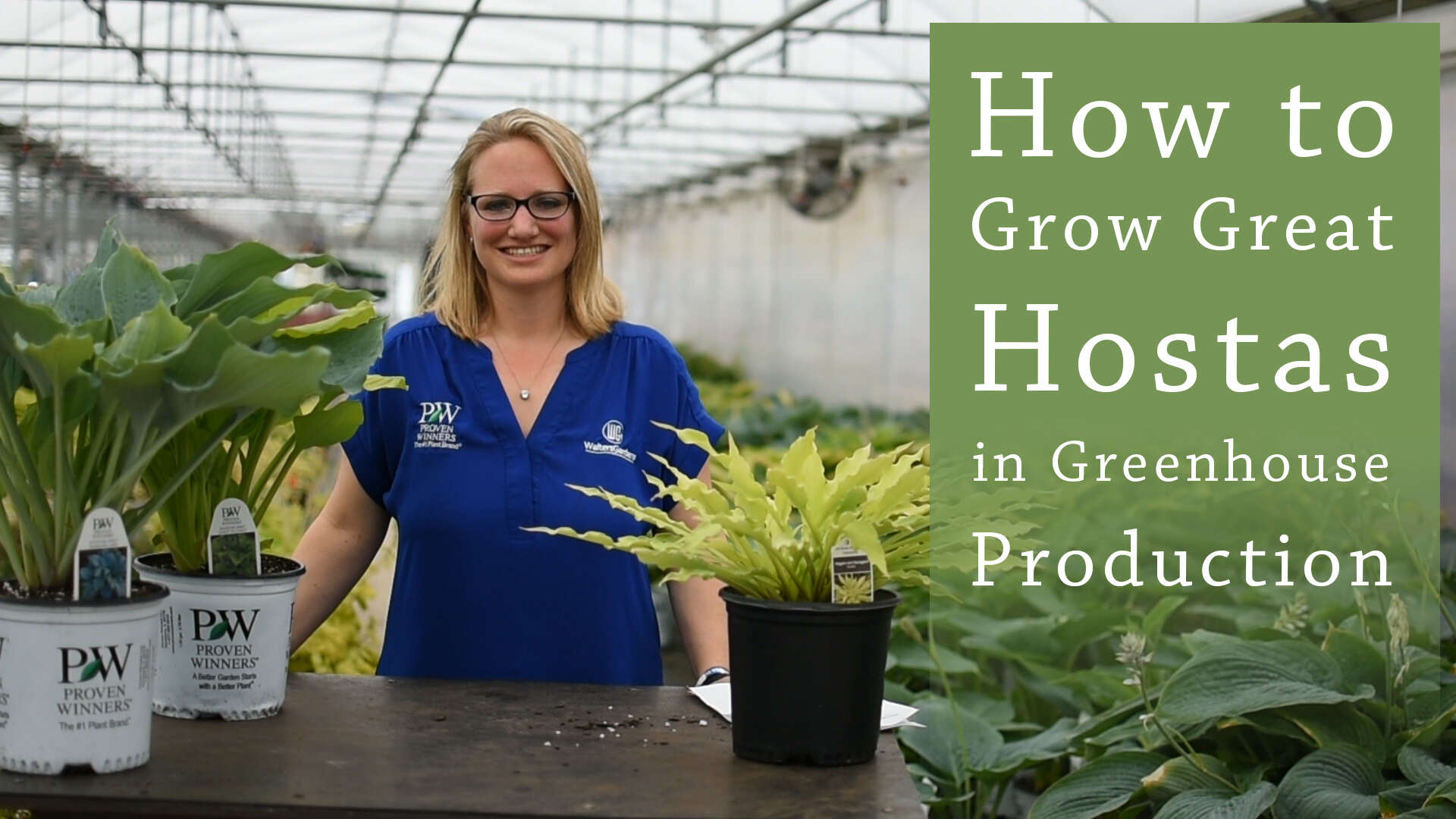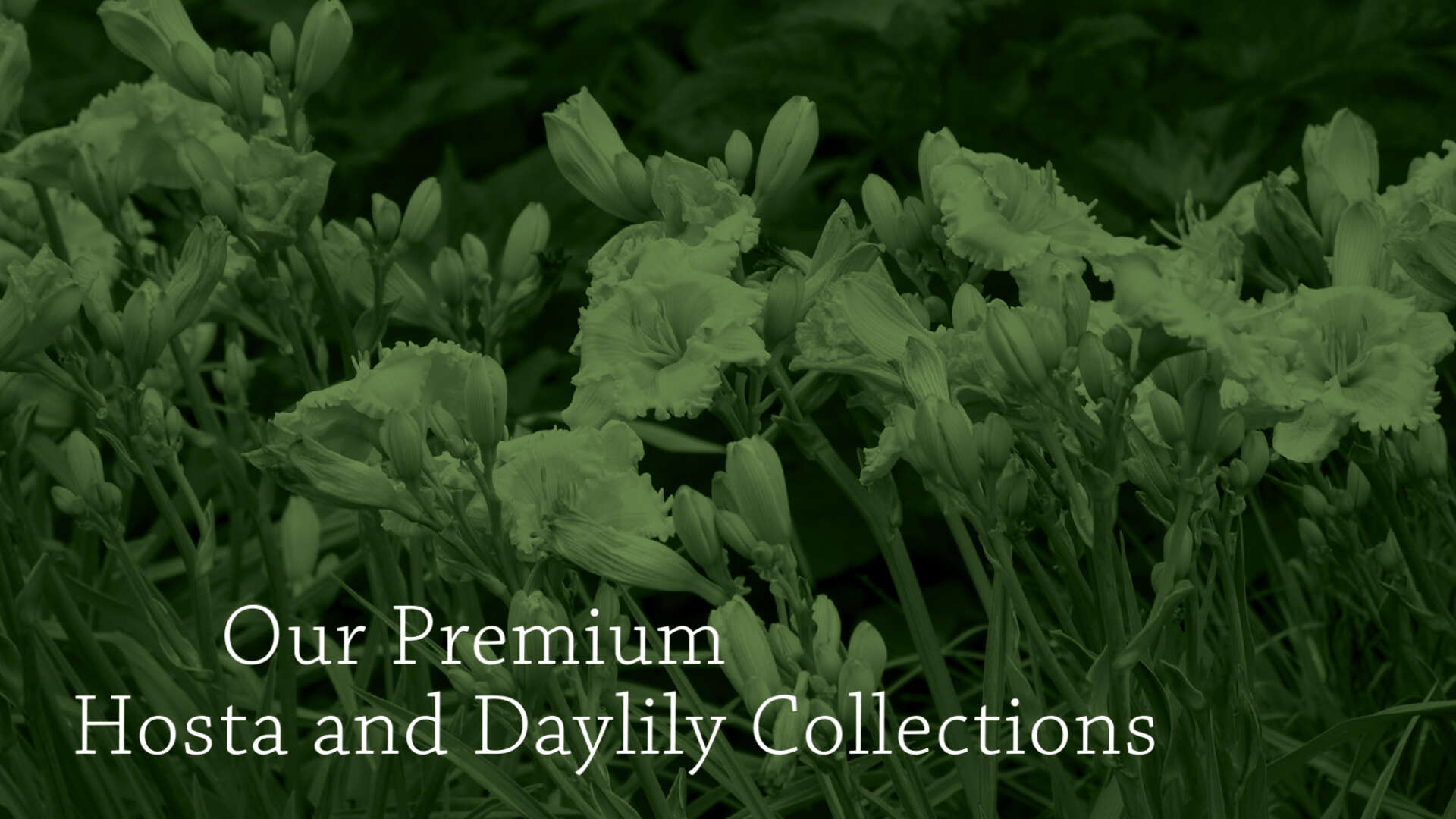Hosta 'Mini Skirt' PP26743


Common Name: Hosta
This petite and flirty hosta forms a miniature mound of very wavy, thick, blue-green leaves with creamy yellow margins in spring. In summer, the center turns more green and the edge lightens to creamy white. Pale lavender flowers with deeper purple stripes appear closely packed together on short, very proportionately sized scapes in early to midsummer.
Show this cute mini hosta off in troughs and other patio containers with good drainage, or plant it right near the edge of the border where it's sure to be seen.
Hostas are exceedingly popular perennials in today's gardens due to their versatility in the landscape. Hostas also grow well in city environments where the air may be polluted by car exhaust, etc.
Premium Hostas
This premium hosta variety is part of a group of the finest hostas available today. To be considered a premium hosta, plants must perform superbly in many zones. They must also exhibit exemplary garden presence and performance, have a long season of appeal in the landscape, have leaves of good substance, and demonstrate a greater resistance to common garden pests.
